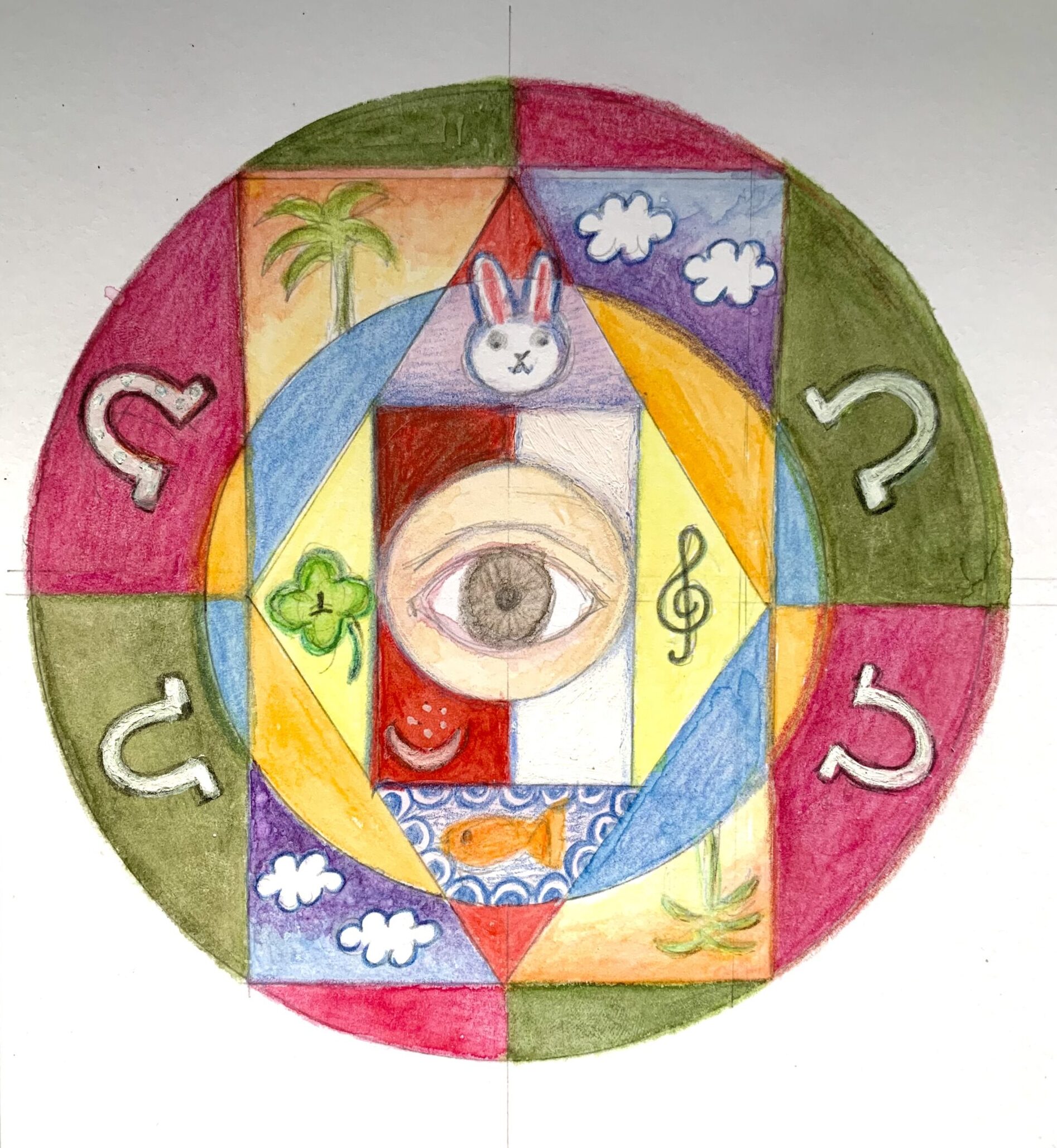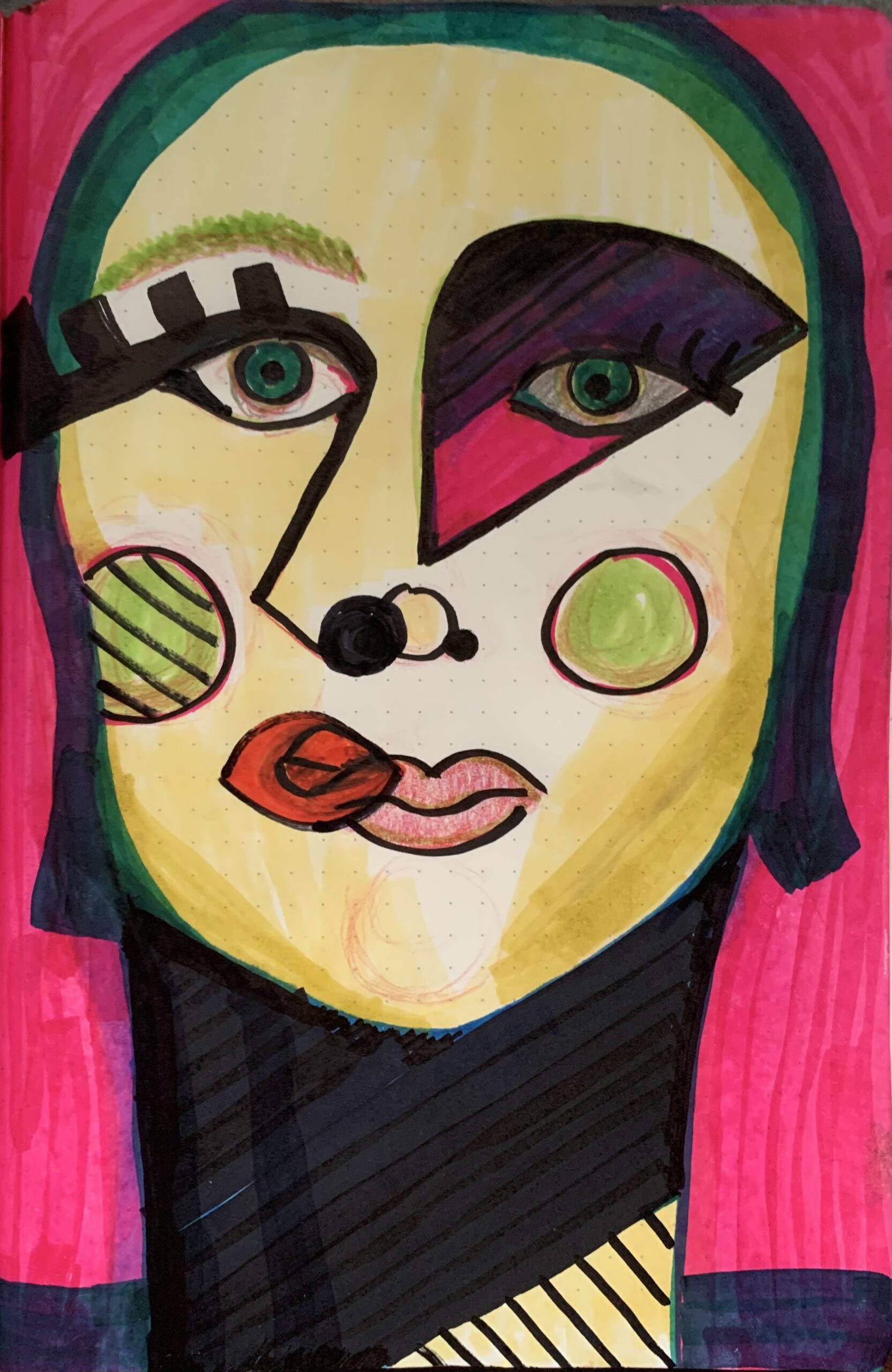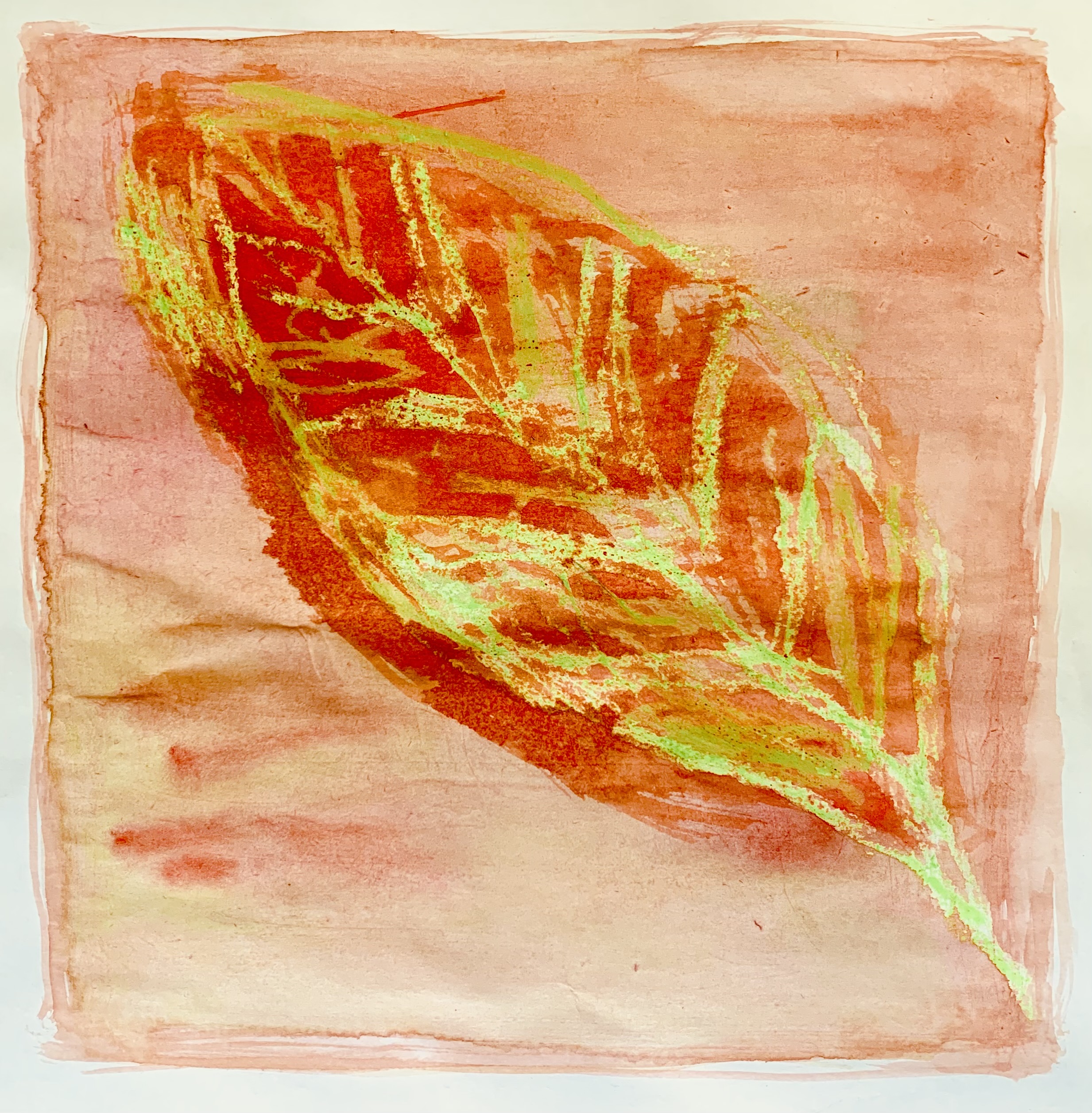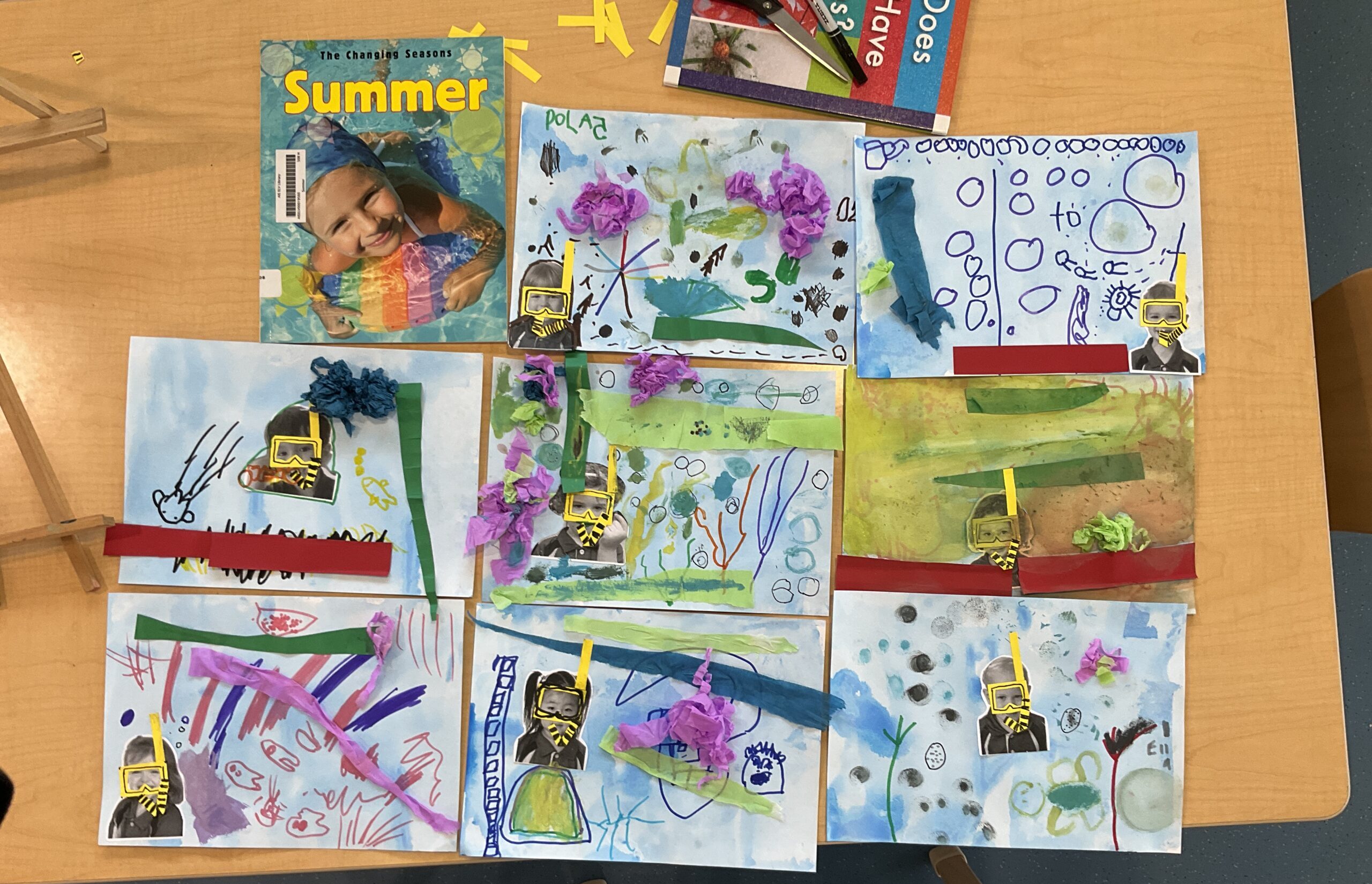“About Me” Mandalas as a Reflection of Self
Central Idea:
Through the creation of a Mandala, we explore who we are, our values, and how we connect to the world around us.
Key Concepts:
- Identity: What makes us unique and connected to the world?
- Connection: How do we relate to ourselves, others, and the world?
- Perspective: How do we see ourselves within a larger context?
Related Concepts:
- Expression: Communicating personal thoughts, beliefs, and emotions.
- Symbolism: Using shapes, colors, and patterns to represent deeper meanings.
Inquiry Questions:
- Factual: What is a Mandala and why is it used in various cultures?
- Conceptual: How can the patterns and colors in a Mandala reflect different aspects of who we are?
- Debatable: Can a Mandala help us better understand ourselves and our connections to others?
Global Context:
Identities and Relationships
This global context explores how individuals and groups interact, express their identities, and form relationships across the world. By creating Mandalas, students will not only connect with their own identity but also learn how art can express cultural and personal meanings globally. The Mandala serves as a perfect example of how a universal symbol transcends geographic and cultural boundaries, inviting students to explore global diversity in symbolic representation and self-expression.
Key Exploration of Global Context:
Cultural Significance of Mandalas: Mandalas have been used for centuries in various cultures, particularly in Hinduism, Buddhism, Native American traditions, and even in Western art. By looking at these traditions, students will see how the Mandala symbolizes wholeness, balance, and the interconnectedness of all things. The circle is a universal symbol of unity.
Connections and Relationships: By examining how people from different cultures use Mandalas for personal reflection, meditation, and spiritual growth, students will explore the idea of interconnectedness—how everyone, regardless of culture, shares similar desires for self-awareness, peace, and understanding.
Objectives:
- Students will learn about Mandalas and their cultural significance.
- Students will create their own Mandala designs to represent their personal identity.
- Students will reflect on their personal connections to others and the world around them.
- Students will express their individuality through color, shape, and pattern choices.
Materials:
- Paper (white or light-colored)
- Pencils and erasers
- Rulers or compasses (for symmetry)
- Markers, colored pencils, or paints (for coloring)
- Optional: Pictures or examples of Mandalas from different cultures (Hindu, Buddhist, Native American, etc.)
Lesson Procedure:
1. Introduction (10-15 minutes):
- Begin with a Discussion:
- Ask students: “What makes you who you are? What things are important to you, and how do you express those things?”
- Briefly introduce the concept of Mandalas: A Mandala is a geometric pattern that is often used to represent wholeness and the universe. It is often used in art and meditation to reflect on personal growth and self-awareness.
- Show Examples:
- Present examples of Mandalas from various cultures, explaining how the patterns are used for spiritual reflection, balance, and meditation.
- Relate the Mandala to the Central Idea:
- Explain that in this lesson, students will create a Mandala that reflects their own identity, values, and connections with others. Each design element they include will represent a part of who they are.
2. Exploration (10-15 minutes):
- Guided Reflection:
- Ask students to think about symbols, shapes, or colors that represent their personality, family, beliefs, hobbies, or anything that makes them who they are. Prompt them with questions like:
- What symbols or shapes make you feel calm or happy?
- What is something that is important to you, like your family, friends, or a place that feels special?
- What colors make you feel good about yourself?
- Ask students to think about symbols, shapes, or colors that represent their personality, family, beliefs, hobbies, or anything that makes them who they are. Prompt them with questions like:
- Sketching:
- Provide students with paper and pencils. Ask them to lightly sketch a large circle in the center of their paper and begin to plan their Mandala. They can use symmetrical or freeform patterns as they choose.
- Encourage them to think about their identity as they plan their design—whether it’s through specific symbols (like hearts, stars, flowers, animals) or abstract shapes that express how they feel.
3. Creation (30-40 minutes):
- Start Designing:
- Students will now begin creating their Mandalas. They can draw different patterns, shapes, and symbols in the sections of the Mandala.
- Once they are satisfied with their sketches, they can go over their lines with markers or pens, and then begin adding color using colored pencils, markers, or paints.
- As they work, remind them to think about how their colors and patterns reflect parts of their identity. For example:
- A calm person might choose soothing colors like blue and green.
- Someone who loves nature might include leaf or flower patterns.
4. Reflection (10-15 minutes):
- Self-Reflection:
- After students finish their Mandalas, give them time to reflect on the following:
- Why did you choose the colors or patterns you used? What do they represent about who you are?
- How do the patterns in your Mandala connect with the people or things that are important to you?
- What does the completed Mandala tell you about yourself and your connections to the world?
- After students finish their Mandalas, give them time to reflect on the following:
- Group Share (Optional):
- If time allows, have students share their Mandalas with the class or in small groups. They can describe the symbols and colors they chose and explain what they represent about their identity.
5. Conclusion (5 minutes):
- Wrap up the lesson by asking students to reflect on how creating the Mandala helped them understand themselves better. Encourage them to continue using art as a way to express and explore their identity.
Assessment:
- Formative Assessment: Observe students as they work on their Mandalas, noting their ability to connect personal ideas and emotions to their designs. Assess their engagement in the reflection process.
- Summative Assessment: Evaluate the completed Mandalas based on creativity, how well they reflect personal identity, and the thoughtfulness behind their design choices.
Extension:
- Homework/Follow-Up: Students could create a personal statement or journal entry about the symbolism in their Mandala and how it represents their identity.
- Classroom Display: The Mandalas can be displayed in the classroom with a short description or artist’s statement from each student explaining their work.
This lesson combines art, reflection, and personal exploration, allowing students to connect deeply with the IB PYP theme of Who We Are. The Mandala serves as a vehicle for self-expression and a powerful tool for personal growth.
Humanities Connection
Mandalas are intricate, geometric designs that are often used in spiritual and cultural practices, particularly in Hinduism and Buddhism, to represent the universe, wholeness, and the interconnectedness of all things. These designs can also be used for meditation and self-reflection. While the mandala is a visual art form, its deeper meanings and uses connect to multiple disciplines within the humanities, including philosophy, psychology, religion, and literature.
Mandalas and the Humanities
- Psychology: Carl Jung, a prominent Swiss psychiatrist, extensively explored the concept of mandalas in the context of psychology. He viewed the mandala as a representation of the self and a tool for self-realization and individuation. According to Jung, the process of creating or meditating on a mandala could help individuals access the unconscious mind, promoting a sense of inner balance and wholeness. This ties into the humanities by contributing to our understanding of human consciousness, mental health, and the ways in which art and symbolism can support psychological growth.
- Religion and Spirituality: Mandalas are a central feature in several religious traditions, most notably in Buddhism and Hinduism. These designs are used as aids in meditation, to visualize divine presence, or to represent the cosmic order. The use of mandalas in these contexts can be seen as part of a broader study of how humans have expressed their spiritual beliefs and connected with the divine through symbols and art. This area of study is a key component of religious studies within the humanities, where scholars explore the role of symbols and rituals in shaping religious experience.
- Philosophy: The circular nature of the mandala often symbolizes wholeness, infinity, and the cyclical nature of life. In philosophical terms, mandalas can represent concepts such as the unity of all existence or the interconnectedness of all things in the universe. Philosophical discussions on symbolism, aesthetics, and the meaning of life often intersect with the study of mandalas, as the designs provoke questions about the nature of reality, the self, and the universe.
Mandalas and Literature
Mandalas’ use of symbolism also ties into literature, where symbolism plays a central role in conveying deeper meanings and connecting the personal to the universal.
- Symbolism in Literature: Just as mandalas use specific geometric shapes and colors to convey particular meanings, literature uses symbols to represent abstract ideas, emotions, or themes. Writers often use symbols to convey the complexity of human experience, and a mandala’s intricate, often symmetrical design can mirror the complexity of a narrative or character’s inner world. In literature, the structure of a story, such as a circular or repetitive narrative, may echo the symbolism of a mandala. For example, in a novel or poem, a circular or recurring motif might serve as a metaphor for a character’s journey toward self-understanding, a theme of unity, or the cyclical nature of life and death. This connects to the symbolic nature of the mandala as an archetype for wholeness or the universe, often used to represent an individual’s spiritual journey.
- Character Development: Just as a mandala represents a journey to inner wholeness, literary characters often undergo journeys of self-discovery and transformation. Writers may use the idea of symmetry or a symbolic “circle” to suggest the ways in which characters’ lives are intertwined with larger, universal themes. The mandala, in its balanced and complete form, can be compared to the narrative arcs of characters who move toward understanding and integration.
- Narrative Structures: Literature often explores complex structures, and some literary works make use of circular or cyclical narratives that mirror the mandala’s shape and its symbolism of completeness and wholeness. The structure of a story might take a form that reflects the cyclical journey of the protagonist, which could align with the symbolism found in mandalas, where the end point connects back to the beginning. For instance, in novels where characters revisit their past or confront unresolved conflicts, this mirroring of a “circular” journey can reflect mandala-like themes of reconciliation and spiritual growth.
Conclusion
Mandalas, with their rich symbolism and historical use in various cultural and spiritual contexts, offer a unique lens through which to explore the humanities. Their connection to literature is particularly significant, as both employ symbolic elements to communicate deeper truths and engage with themes of wholeness, identity, and the human experience. Whether through the structure of a narrative, the development of a character, or the themes explored in a text, the use of mandala-like symbols in literature can offer profound insights into the ways we understand ourselves and the world around us.
Inspiration Links and Resources:
Here are some great sources to help deepen the students’ understanding of Mandalas and their global significance:
1. Mandalas in Various Cultures:
- Buddhism:
- Buddhist Mandalas are sacred symbols used in meditation to represent the universe. You can explore how Buddhist monks create intricate Mandalas out of sand as part of a ritual to symbolize impermanence.
- Buddhist Mandalas: Meaning and Symbols
- The Sand Mandala Tradition – A video of Tibetan monks creating a sand Mandala.
- Hinduism:
- Hindu Mandalas represent the cosmic universe and are used in meditation to create harmony and focus. You can explain how Mandalas are used in sacred rituals.
- Hindu Mandalas: History and Significance
- The Significance of Mandalas in Hinduism
- Native American:
- Mandalas are often used in Native American culture as symbols of the circle of life, nature, and interconnectedness.
- Native American Mandalas: Meaning and Uses
- A History of Native American Art and Spiritual Symbols – An exploration of Native American symbols, including Mandalas.
2. Art and Design Inspiration:
- Modern Mandalas in Art:
- Explore how contemporary artists are using Mandalas in their art to explore themes of identity and connection. There are many modern interpretations and uses of Mandalas in various art forms.
- Mandalas in Modern Art: Examples and Inspiration
- Mandala Art – Modern Interpretations
- Interactive Mandala Creation Tool:
- Let students explore interactive Mandala-making tools, which could inspire them to experiment with different designs and colors online before creating their physical artwork.
- Mandala Generator – An online tool to create digital Mandalas.
3. Student-Centered Exploration and Inspiration:
- Classroom Exploration:
- Encourage students to research the use of Mandalas in other parts of the world and report back with a presentation or poster about what they’ve discovered.
- Websites like Pinterest or Instagram often feature many modern interpretations of Mandalas, from intricate hand-drawn designs to digital artwork.
- Mandalas on Pinterest
- Instagram: Mandala Artists
4. Global and Personal Reflection:
- Cross-Cultural Video Project:
- Students can watch videos of people from different cultures creating Mandalas. This can spark conversations about the global importance of the Mandala and how it represents the unity of all people.
- Creating a Sand Mandala – A video on how a traditional Tibetan sand Mandala is created.
- Mandala Meditation: The Circle of Life – A video exploring the use of Mandalas for mindfulness and meditation in different cultures.
Incorporating Global Context into the Lesson:
- Discussion Prompts:
- How do people from different cultures use Mandalas? What are the common themes in all these cultures’ use of Mandalas?
- Do you think the idea of “balance” represented in Mandalas is something everyone around the world can relate to? Why or why not?
- How can understanding other cultures’ use of Mandalas help us connect with people from different parts of the world?
- Extension Activity:
- Students could research another culture’s art or design used for meditation or self-reflection, such as African beadwork or Aboriginal dot painting, and create a project that incorporates elements from both Mandalas and the new cultural art form.
This approach enriches the lesson by connecting local identity with a global perspective, emphasizing how art can transcend cultural boundaries while allowing for personal expression. By engaging with both the historical significance and the modern adaptations of Mandalas, students will gain a deeper appreciation of how art can express identity, culture, and interconnectedness across the world.






















